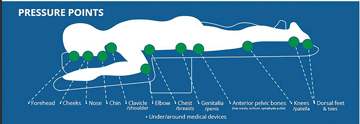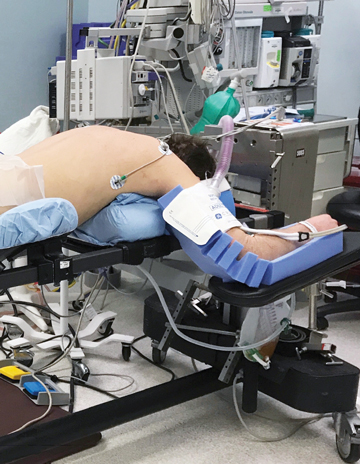Spine surgery patients placed in the prone position can develop pressure injuries on areas of their bodies without much natural protection. Fortunately, there are plenty of products and practices that can help keep their skin intact during complex cases that typically last longer than two hours.
Efforts to prevent pressure injuries begin with pre-op assessments of the patient's skin integrity. Everyone's body habitus is different, however, so examine patients for potential trouble spots in pre-op. Also make sure they don't have some kind of chest deformity, a prominent set of ribs or have had a mastectomy traits that can increase the risk of pressure injures. Pad these areas as appropriate. In general, focus on protecting a patient's face, chest, chin and ribs.
When assessing patients in pre-op, use the Scott or Munro trigger scales, which help to predict pressure injuries in surgical patients. In addition to these results, the biggest risk factor for pressure injury is the duration of the surgery. Any procedure lasting longer than 2.5 hours increases the likelihood of skin breakdown. Of course, patients with ASA scores of 3s and 4s have a higher risk than those with 1s or 2s — and there's a huge jump in risk between scores of 2 and 3. Operations are often longer for patients with higher ASA scores due to the need for additional time to manage their underlying diseases. In addition, patients who have more comorbid disease often have surgical conditions in later stages requiring more complex and lengthy procedures. However, don't be fooled into thinking that a young healthy person having a multilevel spinal fusion that will take several hours is not at risk — let the estimated time of surgery be your guide.
Patients should be reexamined for pressure injuries in the PACU, even though most don't appear for about 48 hours after a procedure. During the post-op follow-up, you should always ask patients if any deep-tissue pressure injuries have formed. They appear as bruising or manifest as pain in areas of the body exposed to pressure during surgery, so be sure to ask about discomfort in the face, shoulders, ribs and lower legs.
.svg?sfvrsn=be606e78_3)


.svg?sfvrsn=56b2f850_5)